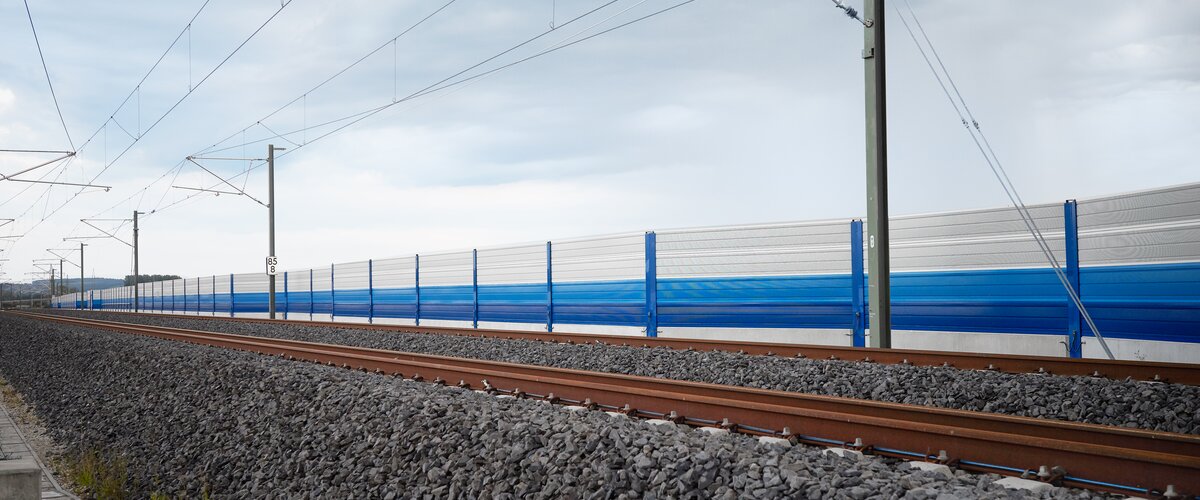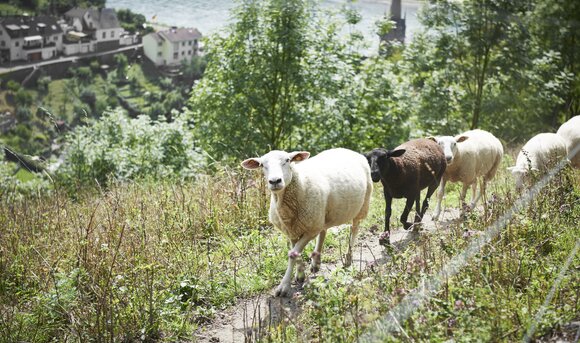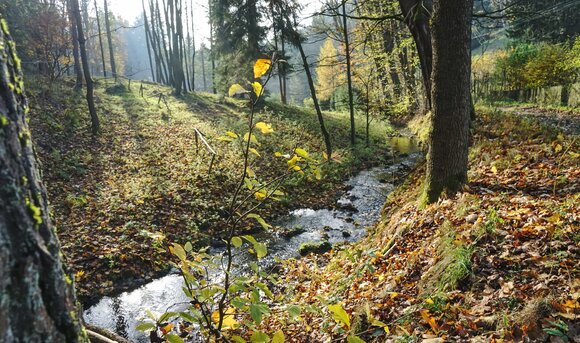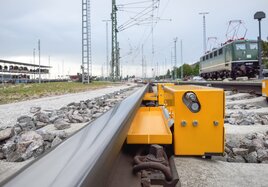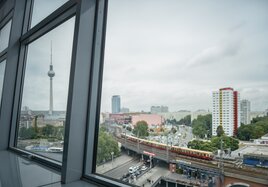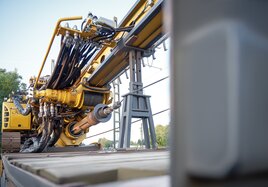To ensure residents living near rail lines have more peace and quiet, we cut rail noise by half by the end of 2020. By 2030 we want to relief a total of more than 800,000 residents along our tracks from rail noise. This figure represents over half the total number of people affected currently living near rail routes. By 2050, we will have improved the situation for all residents exposed to railroad noise in this way - more than 1.6 million people.
To achieve this, we are erecting noise barriers on new and upgraded lines, for instance. But noise barriers are also being installed on existing routes with funds from the federal government's voluntary noise abatement program. Whenever a train passes by, the walls absorb noise and shield nearby homes. Some of them take the form of ow-height noise barriers and other are gabions - mesh cages filled with stones.
With the help of the federal noise abatement program, we had already noise abatement on 2.324 km kilometers of our rail network by the end of 2024 build new noise barriers and fitted apartements with sound-insulating windows.
Noise barrier design
We know that noise barriers always have an impact on the landscape and the surrounding area. That's why Deutsche Bahn attaches great importance to effective interaction between noise reduction for local residents on the one hand and compatibility with urban development on the other.
Since 2019, the noise mitigation funding policy has enabled funding to be provided for more elaborately planned and designed noise barriers, for example in tourist regions, in some cases for the first time. This will help us better take into account local needs regarding the appearance of noise barriers and increase support for construction projects.
To prevent noise pollution, we will be erecting modern and visually appealing noise barriers in the future, for example as part of construction of the rail link for the Fehmarnbeltquerung. Transparent building materials can be used at the seven new stops between Lübeck and Fehmarn, or wall designs bearing municipal coats of arms. Initial samples were presented in Oldenburg (Holstein) in mid-December 2022 in collaboration with the Schleswig-Holstein Local Transport Association (NAH.SH). Residents can vote online on the design of future noise barriers in the Lübeck urban area.
We also deploy noise barriers around constructions sites. So that birds can breed undisturbed, for example, and residents can sleep peaceful.
